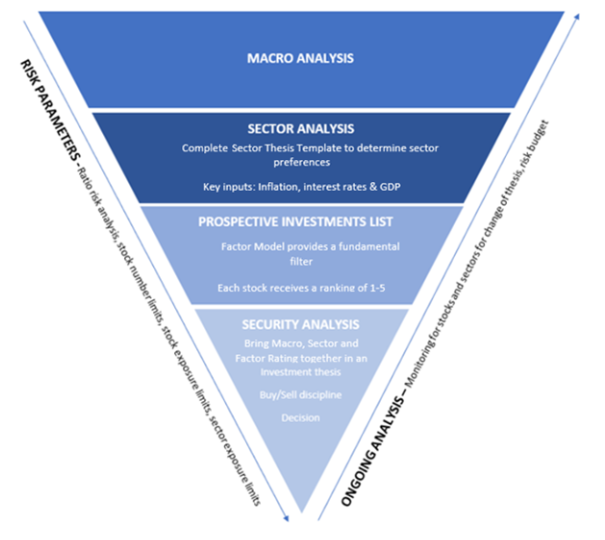How to sort for stocks: factor screening explained
Factor screening is the process of identifying the most important factors in a data set.
When applied to stocks, it’s a set of rules used to narrow your investable universe to those that meet your desired criteria such as earnings growth, dividend yield and price-to-earnings ratio.
A basic screen to look for fairly priced companies that pay a solid dividend yield could include factors such as:
- Market cap above $500 million
- PE ratio less than 15
- Dividend yield above 4%
Why is it useful?
Factor screening is useful because of the amount of choice we have in the stockmarket.
There are thousands of companies, hundreds of factors and many investment styles – The combination of choices is almost endless.
Ultimately we want to take the thousands of stocks available (point A), push them through a process and identify which ones meet the investment style we prefer (point B).
If we build our models right, we can whittle down the 2,000 or so stocks on the ASX to a more manageable number that meets our criteria.
You can then undertake further due diligence on those stocks to determine exactly which stocks earn a position in a portfolio.
How do you build a factor screen?
Knowing the investment style you want to screen for is one of the most important steps in building a factor screen.
For example, if your investment style is growth, you wouldn’t necessarily be looking at value factors such as price-to-earnings, price-to-book and price-to-cash flow etc.
Furthermore, if you’re trying to build a high-yield portfolio, you wouldn’t be looking at growth or momentum factors. Instead, you would be looking for factors above earnings and dividend sustainability.
How many factors is the right amount?
This is the million dollar question.
When I was running portfolios in a previous life, we used to have a two-stage process.
The first stage of the process was fairly basic:
- A five factor model that would act as the first ‘gate’
- A stock needed to meet or beat all of the criteria in order to qualify and move to the next stage of the process
- That gate was good for bringing the investable universe down to 80-100 stocks
The second 'gate' was a far more rigorous, factor ranking model that scored those 80-100 stocks across approximately 25 criteria, and ranked them in order. Those stocks that ranked highest were the ones that ultimately made it into the portfolio, depending on the other risk parameters (sectors weighting, risk limits, etc) that governed the portfolio.
One thing to keep in mind is the end goal.
If the goal is to whittle down the 2200 stocks on the ASX to 40-50 stocks that you want to conduct deeper research on, then somewhere between 5-10 factors should be more than enough.
What you want to avoid is having so many factors that no stocks pass the screen, or too few factors and you end up with 300 stocks to sort through.
The other consideration is to make sure that you aren’t cross-pollinating factors, i.e., don’t select some growth factors and some value factors and put them together in the same screen, hoping to shoehorn your favourite stocks into the process. It doesn’t work like that.
If you want to use this approach, you need to accept that the data is the data and that stocks that you love simply might not meet the criteria that match your intended investment style. In that case, the outputs say more about you than the stocks or the method, and you should adjust accordingly.
The overall process
It’s worth noting that factor screening is just one part of the investment process. For top-down investors, macro analysis and sector analysis typically sit above the factor screening stage (as can be seen in the image below), whilst qualitative analysis and company-specific research sit below.
The investment funnel

For bottom-up investors that focus on analysing individual companies to identify those that are undervalued, factor screening is often paramount to the process.
The rubber meets the road
It’s one thing to tell you about factor screening, it’s another to show you.
In future articles as part of an ongoing series, we will be discussing factors and building factor screens for different investment styles. We will then be running those screens over the market and furnishing you with the list of stocks that meet the criteria.
Upcoming screens:
- 31 August: A four factor screen for ASX 200 growth stocks
- TBD: A five factor screen for ASX 200 dividend stocks
This article was originally published on Market Index on Wednesday 30 August 2023.
2 topics

